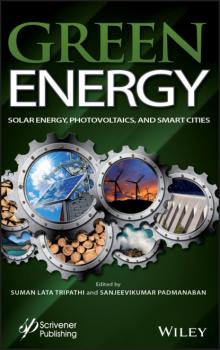Группа авторов
Список книг автора Группа авторовDigital Transformations in the Challenge of Activity and Work
TECHNOLOGICAL CHANGES AND HUMAN RESOURCES SET Coordinated by Patrick Gilbert The accelerating pace of technological change (AI, cobots, immersive reality, connected objects, etc.) calls for a profound reexamination of how we conduct business. This requires new ways of thinking, acting, organizing and collaborating in our work. Faced with these challenges, the Human and Social Sciences have a leading role to play, alongside others, in designing, supporting and implementing these digital transformation projects. Their ambition is to participate in the development of innovative and empowering devices, that is to say, systems that are truly at the service of human beings and their activity, that empower these professionals to take action and that also provide occupational health services. This book takes a multidisciplinary look at the challenges of these digital transformations, making use of occupational psychology, ergonomics, sociology of uses, and management sciences. This viewpoint also helps provide epistemological, methodological and empirical insights to better understand and support the changes at work.
Biologics, Biosimilars, and Biobetters
A comprehensive primer and reference, this book provides pharmacists and health practitioners the relevant science and policy concepts behind biologics, biosimilars, and biobetters from a practical and clinical perspective.<br /><br /> <ul> <li>Explains what pharmacists need to discuss the equivalence, efficacy, safety, and risks of biosimilars with physicians, health practitioners, and patients about</li> <li>Guides regulators on pragmatic approaches to dealing with these drugs in the context of rapidly evolving scientific and clinical evidence</li> <li>Balances scientific information on complex drugs with practical information, such as a checklist for pharmacists</li> </ul>
Nanopharmaceutical Advanced Delivery Systems
The book provides a single volume covering detailed descriptions about various delivery systems, their principles and how these are put in use for the treatment of multiple diseases. It is divided into four sections where the first section deals with the introduction and importance of novel drug delivery system. The second section deals with the most advanced drug delivery systems like microbubbles, dendrimers, lipid-based nanoparticles, nanofibers, microemulsions etc., describing the major principles and techniques of the preparations of the drug delivery systems. The third section elaborates on the treatments of diverse diseases like cancer, topical diseases, tuberculosis etc. The fourth and final section provides a brief informative description about the regulatory aspects of novel drug delivery system that is followed in various countries.
Internet of Things in Business Transformation
The objective of this book is to teach what IoT is, how it works, and how it can be successfully utilized in business. This book helps to develop and implement a powerful IoT strategy for business transformation as well as project execution. Digital change, business creation/change and upgrades in the ways and manners in which we work, live, and engage with our clients and customers, are all enveloped by the Internet of Things which is now named “Industry 5.0” or “Industrial Internet of Things. The sheer number of IoT(a billion+), demonstrates the advent of an advanced business society led by sustainable robotics and business intelligence. This book will be an indispensable asset in helping businesses to understand the new technology and thrive.
Genome Engineering for Crop Improvement
In recent years, significant advancements have been made in the management of nutritional deficiency using genome engineering—enriching the nutritional properties of agricultural and horticultural crop plants such as wheat, rice, potatoes, grapes, and bananas. To meet the demands of the rapidly growing world population, researchers are developing a range of new genome engineering tools and strategies, from increasing the nutraceuticals in cereals and fruits, to decreasing the anti-nutrients in crop plants to improve the bioavailability of minerals and vitamins. Genome Engineering for Crop Improvement provides an up-to-date view of the use of genome editing for crop bio-fortification, improved bioavailability of minerals and nutrients, and enhanced hypo-allergenicity and hypo-immunogenicity. This volume examines a diversity of important topics including mineral and nutrient localization, metabolic engineering of carotenoids and flavonoids, genome engineering of zero calorie potatoes and allergen-free grains, engineering for stress resistance in crop plants, and more. Helping readers deepen their knowledge of the application of genome engineering in crop improvement, this book: Presents genetic engineering methods for developing edible oil crops, mineral translocation in grains, increased flavonoids in tomatoes, and cereals with enriched iron bioavailability Describes current genome engineering methods and the distribution of nutritional and mineral composition in important crop plants Offers perspectives on emerging technologies and the future of genome engineering in agriculture Genome Engineering for Crop Improvement is an essential resource for academics, scientists, researchers, agriculturalists, and students of plant molecular biology, system biology, plant biotechnology, and functional genomics.









